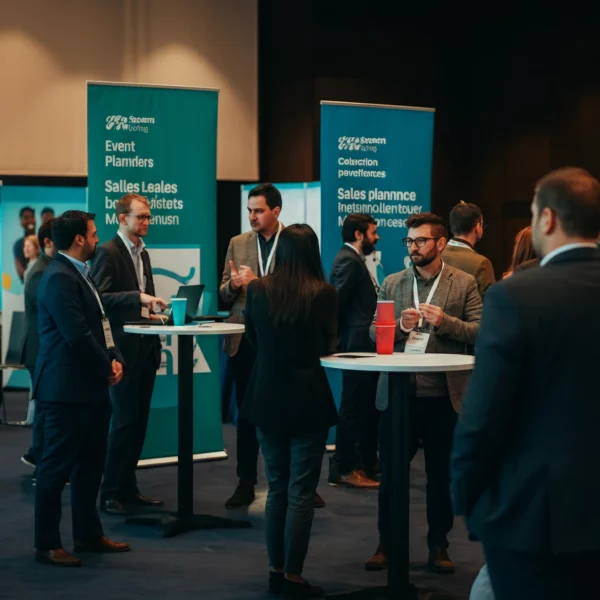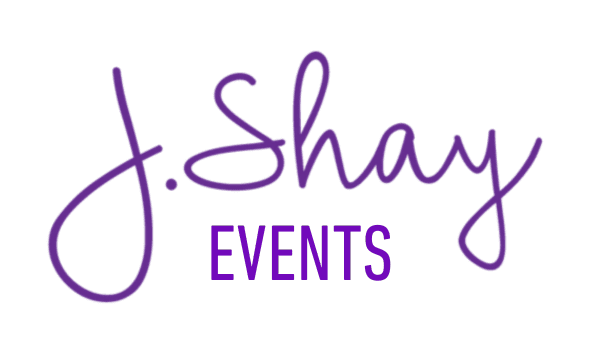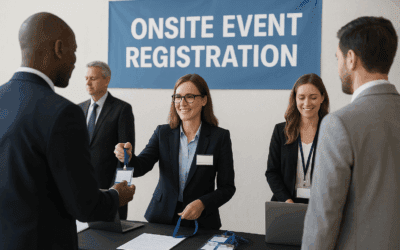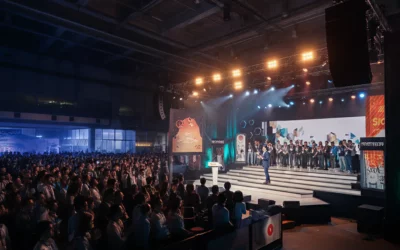1) Start with hypotheses — treat the event like an experiment
Stop thinking “attendance” as your North Star. Great conference planning and management reframes the event as a controlled test to validate business hypotheses (product adoption, upsell lift, NPS improvement, pipeline acceleration). For each objective, write a measurable hypothesis:
-
Adoption hypothesis: “If we run three peer-led deep-dive labs and distribute follow-up how-to videos, product activation among trial accounts will increase by 18% in 90 days.”
-
Revenue hypothesis: “If we run targeted executive roundtables, we will convert 8% of qualified attendees into $50k+ deals in 6 months.”
Structure budget, agenda, and marketing around proving or disproving those hypotheses — this forces priority and helps demonstrate ROI.
Why this matters: Bizzabo benchmarking shows event teams increasingly tie events to pipeline and revenue; your metrics must reflect that or the rest of your investment is table stakes.
2) Audience segmentation that actually informs programming
Most planners use broad buckets (customer, partner, prospects). Instead, create micro-segments with actionable needs: “technical implementer > needs migration templates,” “ops lead > cares about uptime playbook,” “CFO > ROI models.” Map session types to segments — lab, playbook clinic, executive briefing — and limit each track to one behavior you want to change.
-
Build an attendee heatmap that ties physical spaces (booths, rooms) to persona flows: where will the C-suite be at 10:30 vs engineers? Use the heatmap to allocate rooms, AV, and staff.
3) Agenda engineering: sequence for behaviour change, not content dumping
Design sessions to progress attendees through a funnel: expose → activate → reinforce → mobilize. Use these formats intentionally:
-
Expose: High-level keynotes that reframe problems (avoid product decks).
-
Activate: Hands-on labs and “my-account” clinics where attendees complete adoption tasks — track completion against the adoption hypothesis.
-
Reinforce: Office hours, peer panels, and guided case study workshops for social proof.
-
Mobilize: Advocacy sessions and short filming studios for customer story capture.
Measure micro-conversions (lab completion rate, recorded testimonials) — not just check-ins.

4) Logistics & hybrid execution — real-world failure modes and fixes
Common failure: treating virtual and in-person as separate projects. Treat them as one distributed experience:
-
Single source of truth: central content repo and live streaming architecture that serves both audiences (same session ID, same Q&A stream).
-
Engagement parity: create parallel call-to-action for virtual attendees (virtual lab Slack channels, remote peer breakout tables) and assign a “remote producer” whose sole KPI is remote retention.
-
Measurement parity: instrument both audiences with the same outcome events (e.g., “completed migration lab”) so your adoption metrics are comparable. Research shows hybrid events drive reach but require new engagement designs to unlock value.
5) Advanced attendee acquisition: zero-party data, intent signals, and channel mix
Go beyond email blasts. Use micro-surveys, product usage signals, and account intent to target invites. Examples:
-
Invite users with 3+ logins in 30 days to a “power user” lab.
-
Create a VIP path for accounts with open opportunities >$25k.
-
Use interactive ad creative (LinkedIn lead gen forms prefilled with product role) to capture intent.
This targeted approach reduces acquisition cost and increases conversion quality — which directly improves ROI reporting.
6) Content capture and the archive strategy (the GEO play)
You will get the most value from the event after it ends — if you structure content for reuse and for AI discovery.
Tactical blueprint:
-
Record everything in high-quality — sessions, transcripts, slide decks, and short 2–4 minute “micro-snippets” that answer a single question.
-
Publish canonical pages: one hub page per session with transcript, TL;DR bullets, timestamps, and downloadable resources. AI models favor well-structured, clearly labeled content; include explicit Q&A sections formatted as question/answer pairs.
7) GEO tactics — get your event found by AI answers
Generative Engine Optimization is nascent, but you can take pragmatic steps now:
-
Structure copy for answer extraction: use concise headings, Q&A blocks, numbered lists and clear entity mentions (event name, locations, speaker names). AI answers often surface sources that can be easily parsed. Search Engine Land
-
Create ‘micro-knowledge’ artifacts: 200–400 word pages that directly answer conversational queries (e.g., “how to manage a hybrid user conference with global audiences”), then interlink them from hub pages. These match how users ask questions to chatbots.
-
Amplify authoritative signals: get session summaries into reputable publications, podcasts, or trade blogs (these citation links feed AI models’ trust signals). The Guardian and Search Engine Land have documented how AI outputs weigh authority and can be gamed — so aim for credible placements.
-
Test iteratively: use Perplexity, ChatGPT and HubSpot’s GEO tools to query your target prompts and see whether your content appears or your brand is cited — then iterate. HubSpot offers tools that specifically assess GEO visibility.
8) Measurement framework — link activities to business outcomes
Map event activities to three tiers of metrics:
-
Activity metrics: registrations, check-ins, session attendance, Net Promoter Score.
-
Engagement metrics: lab completion, downloads, demo requests, recorded testimonials.
-
Business metrics: pipeline influenced, revenue closed, churn reduction.
Use a simple attribution model: 1) direct (attendee converts within 90 days), 2) assisted (touched by content or lead), 3) influenced (account showed adoption lift). Bizzabo notes many organizers still struggle to prove ROI; build the attribution workplan before you spend.
9) Operational checklist (practical, non-fluffy) — the 30/14/7/1 play
-
30 days out: finalize speakers, record pre-event orientation videos, finalize scripts for critical sessions.
-
14 days out: run full dress rehearsal including remote producers and translation teams; enable registration confirmation flows with session recommendations.
-
7 days out: push micro-content (60-sec speaker clips) across channels; enable calendar invites + calendar cards.
-
1 day out: dry run registration, confirm Wi-Fi, upload final slide decks to hub, set up filming studio for customer stories.
Final takeaways — what separates good from exceptional
-
Treat the conference like a product experiment. Hypotheses first, tactics second.
-
Design for behavior change. Agenda sequencing, labs, and measurable micro-conversions matter more than speaker count.
-
Make hybrid parity non-negotiable. One experience distributed; one set of outcomes measured.
-
Publish intentionally for AI. Short, authoritative, well-structured artifacts and external citations will make your content surface in AI answers — adopt GEO practices now.
-
Measure pipeline, not vanity. If you can’t connect event signals to revenue, move the budget elsewhere.
You might also like…
Event Registration Software & Corporate Event Registration Solutions That Transform the Attendee Experience
The Most Reliable Event Registration Software for Corporate Conferences, Trade Shows, &...
Corporate Event Registration Solutions: Onsite Tools, Support, and Strategies Every Planner Needs
Corporate event planners face increased pressure to deliver flawless attendee experiences. Whether...
Revitalizing Sales Kickoff Events: Strategic Insights for 2026
Sales kickoff events (SKOs) are no longer just pep rallies – they’re mission-critical strategy...




